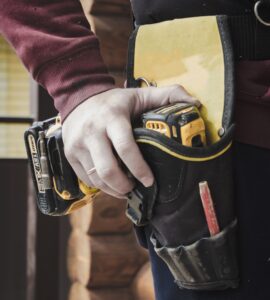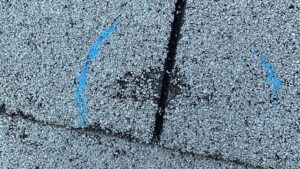Roofing systems come in all shapes and sizes, but one option has been gaining traction due to its versatility and reliability – GRP roofing. GRP, an acronym for Glass Reinforced Polyester, is a fiberglass roofing system predominantly used for flat roofs. Its popularity spans both residential and commercial properties, thanks to its durability and effectiveness. In this article, we’ll dissect the ins and outs of GRP roofing, its operation, and weigh its benefits and potential downsides for homes and businesses.
Decoding GRP
GRP, or Glass Reinforced Polyester, is a fancy term for fiberglass roofing. It’s a composite material that combines glass fibers with a polyester resin matrix. This fusion results in a sturdy, lightweight, and highly robust roofing material, perfect for flat roofs. A GRP roofing system is a multi-layered structure comprising a basecoat, reinforcement mat, and topcoat, each playing a crucial role in ensuring structural solidity and weather resistance.
The manufacturing process of GRP roofing involves careful layering and application of these materials to form a sturdy roofing membrane. Once cured, the GRP roofing turns into a water-impermeable, weather-resistant shield, making it an outstanding choice for flat roofs.
The Mechanics of GRP Roofing
Installation of GRP roofing is a detailed process that calls for professional expertise. Here’s a snapshot of how it works:
- Surface Preparation: The existing roof surface is thoroughly cleaned and prepared to ensure optimal adhesion. Any flaws or irregularities are corrected and leveled as necessary.
- Basecoat Application: The first layer, the basecoat, is applied to the prepped surface. This basecoat is a mix of polyester resin and a catalyst, and it’s crucial to get an even and consistent coverage.
- Reinforcement Mat: A fiberglass reinforcement mat is then placed onto the wet basecoat. This mat imparts structural strength to the roofing system, enabling it to bear heavy loads and foot traffic.
- Topcoat Application: The final layer, the topcoat, is applied over the reinforcement mat. This topcoat, another layer of polyester resin, provides UV resistance and weatherproofing.
- Curing: The entire GRP roofing system is left to cure after the topcoat application. The curing process can range from a few hours to a full day, depending on environmental conditions.
- Trimming and Finishing: Once cured, the roof’s edges and details are neatly trimmed and finished to create a seamless and watertight surface.
The end product is a seamless, watertight, and robust roofing membrane that effectively safeguards the building from water infiltration, UV damage, and other environmental elements.
The Upside of GRP Roofing
Now that we’ve covered the basics of GRP roofing, let’s delve into its advantages for residential homes and commercial buildings:
- Durability: GRP roofing is remarkably long-lasting and can weather decades with proper upkeep. It’s resistant to corrosion, rot, and rust, making it an ideal choice for long-term protection.
- Waterproofing: GRP roofing stands out for its superior waterproofing properties. When properly installed, it forms a completely seamless and watertight surface, eliminating leak risks.
- Lightweight: Despite its strength, GRP roofing is lightweight, reducing the structural load on the building. This can be particularly beneficial for older structures.
- Low Maintenance: GRP roofing requires minimal maintenance over its lifespan. Regular inspections and occasional cleaning are typically all it needs to stay in top shape.
- UV Resistance: The topcoat of GRP roofing offers excellent UV resistance, preventing damage from extended sun exposure.
- Design Flexibility: GRP roofing can be adapted to various architectural styles and preferences. It offers customization in color, texture, and finish to complement a building’s aesthetics.
- Environmental Friendliness: GRP roofing is considered environmentally friendly as it’s recyclable and has a long life cycle, reducing the need for frequent replacements and waste.
Downsides of GRP Roofing
While GRP roofing has numerous benefits, it’s important to also consider its potential downsides:
- Installation Complexity: GRP roofing requires professional installation. DIY attempts are not recommended as mistakes can lead to leaks and reduced durability.
- Initial Cost: The upfront cost of installing a GRP roofing system can be higher than other roofing materials. However, the long-term savings in maintenance and replacement costs often balance out the initial investment.
- Weather Dependency: GRP roofing should not be installed in extreme weather conditions, such as heavy rain or freezing temperatures. This can affect the curing process and the quality of the installation.
- Limited Insulation: GRP roofing alone provides limited thermal insulation. Additional insulation materials may be needed to boost energy efficiency.
- Potential for Ponding Water: Flat roofs are susceptible to ponding water, and GRP roofing is no exception. Proper design and installation are crucial to ensure water drainage.
- Foot Traffic Caution: While GRP roofing is designed to be walkable for maintenance purposes, excessive foot traffic can cause damage over time. Adequate protection measures should be in place.
- Repairs Require Expertise: GRP roofing repairs can be complex and may require professional skills, potentially leading to additional maintenance costs.
Where is GRP Roofing Used?
GRP roofing is versatile and finds applications in both residential and commercial settings:
Residential Use:
- Houses: GRP roofing is increasingly being adopted in residential properties, particularly for flat or low-pitched roofs. Its durability and water resistance make it a trustworthy choice for homeowners.
- Garages and Extensions: GRP roofing is a popular choice for garage roofs and roof extensions, offering additional living or storage space.
Commercial Use:
- Warehouses: Many warehouses and industrial buildings choose GRP roofing due to its cost-effectiveness, durability, and ability to cover large roof areas.
- Retail Buildings: Commercial structures like retail outlets and shopping centers benefit from GRP roofing’s low maintenance and long lifespan.
- Public Buildings: Public buildings, including schools and government facilities, may opt for GRP roofing for its durability and long-term cost savings.
Wrapping Up
GRP roofing, or Glass Reinforced Plastic roofing, is a sturdy and long-lasting solution for flat and low-pitched roofs, serving both residential and commercial properties. While it may come with some installation complexities and initial costs, its long-term benefits, such as waterproofing, durability, and low maintenance, make it a smart investment for those seeking a reliable roofing solution.
Whether you’re a homeowner aiming to protect your property or a business owner looking to safeguard your commercial space, GRP roofing is a versatile and effective choice to meet all your roofing requirements.





